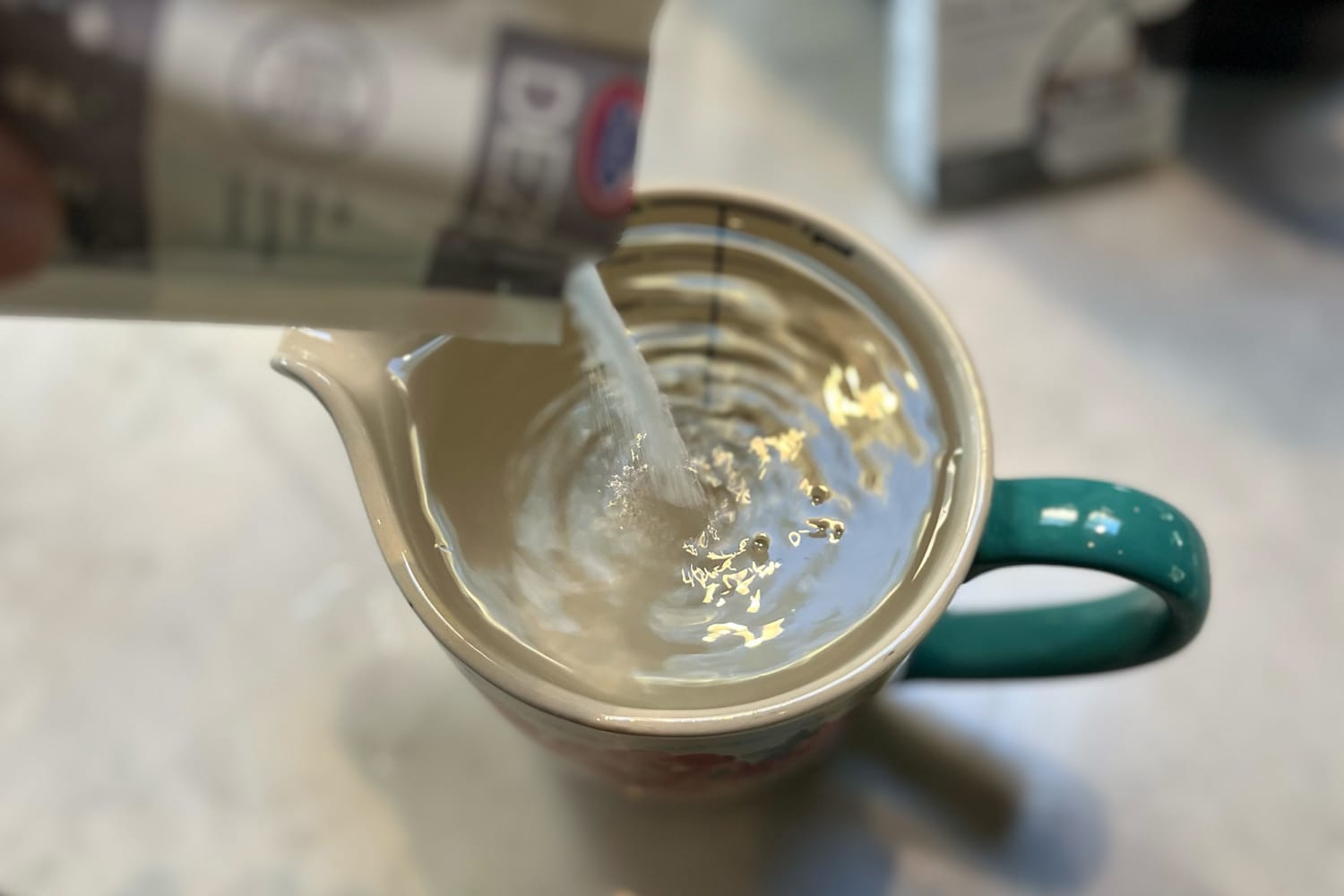We independently select these products—if you buy from one of our links, we may earn a commission. All prices were accurate at the time of publishing.
As a coffee lover, I make mine every morning in a Chemex, because it tastes amazing and requires minimal maintenance. My husband, however, is obsessed with his espresso machine, and my guests have no patience for my pour over, so — through no fault of my own — we own two machines, a Breville Bambino Espresso Machine and a Keurig K-Classic, that require regular descaling to remove mineral buildup and keep the caffeine flowing efficiently.
On my most recent descaling adventure, I decided to try America’s Test Kitchen’s top coffee-maker cleaning tip, as recommended in this recent TikTok.
According to their test kitchen experts, Urnex Dezcal Descaling Powder Solution is the best choice for cleaning coffee makers. If you’re still using vinegar to descale, America’s Test Kitchen says you’re doing it wrong, because it’s not as effective and can actually be corrosive over time. Things got heated in the comments over this claim, but since I hate the smell of vinegar anyway, I wasn’t bothered by this more expensive powdered alternative. I decided to put their method to the test.
The process took a little bit of time (probably because it was with my Keurig and not a standard coffee pot), but all the steps were straightforward. Here’s how it worked:
Step 1: Fill the reservoir with the powder solution.
For my Keurig, I dissolved one packet of powder in 32 ounces of cold water and filled the reservoir with the solution.
Step 2: Run the solution through the machine.
Without inserting a coffee pod, I “brewed” a series of 12-ounce cups, dumping each in the sink, until the “Add Water” light came on.
Step 3: Fill the reservoir with clean water and run it through the machine.
I rinsed the reservoir and then refilled it with clean water. I ran all the water through the machine again, in another series of 12-ounce cups. At this point the water was clear and flowing well, so I tasted it to see if all the solution had been rinsed away — mistake! The water was definitely still sour from the acid and I was moderately alarmed by the poison control warning on the box. Trust me, and complete step four.
Step 4: Repeat Step 3 twice more.
There was a lot of standing at the Keurig and pushing buttons, plus a lot of trips to the sink to pour out the water, but by the time the third reservoir of clean water had filtered through, the water tasted like water. (Thank goodness.)
I like Dezcal Descaling Powder for one main reason: it has no odor. It also worked well on my machine; the water flow definitely improved after the descaling marathon, plus the pre-measured packets made the process super easy.
The Dezcal powder is phosphate-free, and the ingredients include citric acid, sulfamic acid, and aluminum sulfate. If that list alarms you, appliance professionals say you can just use plain citric acid instead — it’s more affordable, too.
So, how often should you really descale your machine? Expert and manufacturer recommendations vary from every six weeks for heavy use to every four months for light use. Most coffee makers have a descaling alert light, but if water isn’t flowing properly through your machine, it’s time to descale. Since the descaling light on my ancient Keurig has never once turned on, I set a reminder on my calendar to descale every two months.
Buy: Urnex Descaling Powder Solution, $10.97

